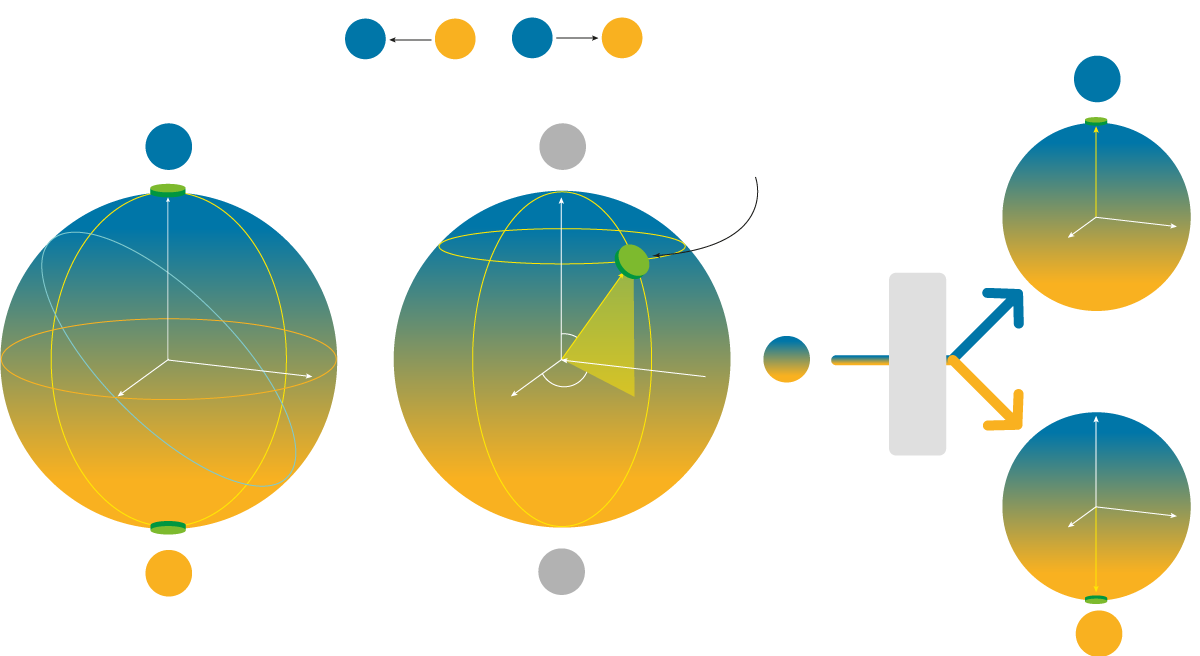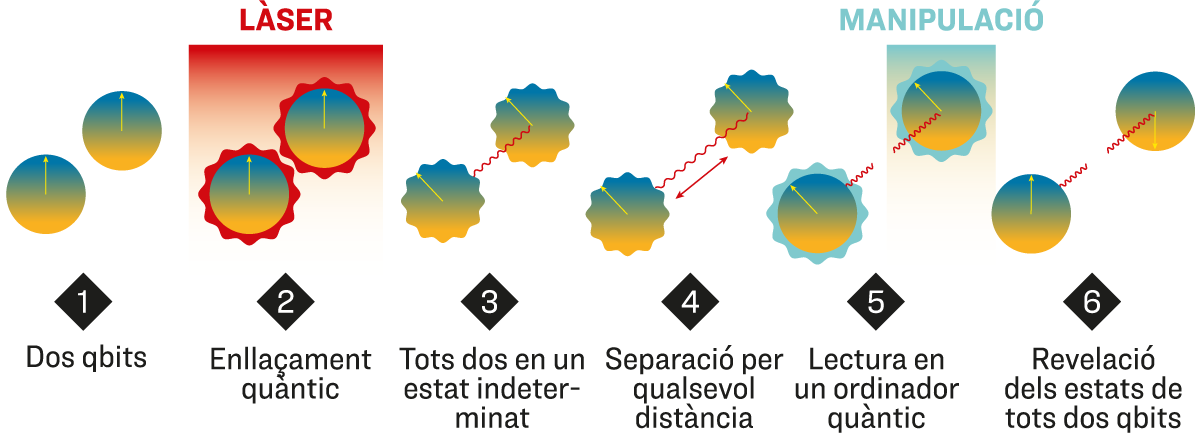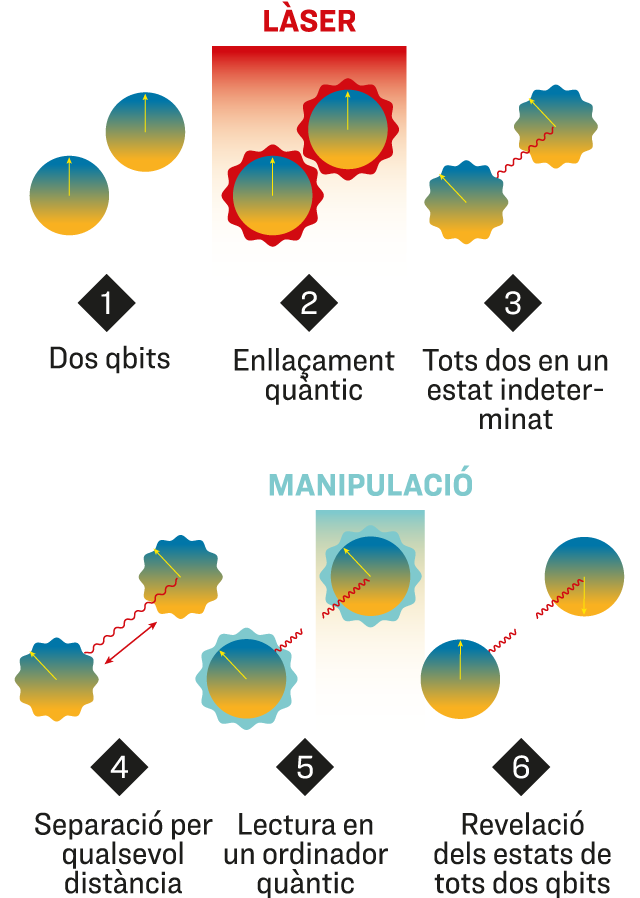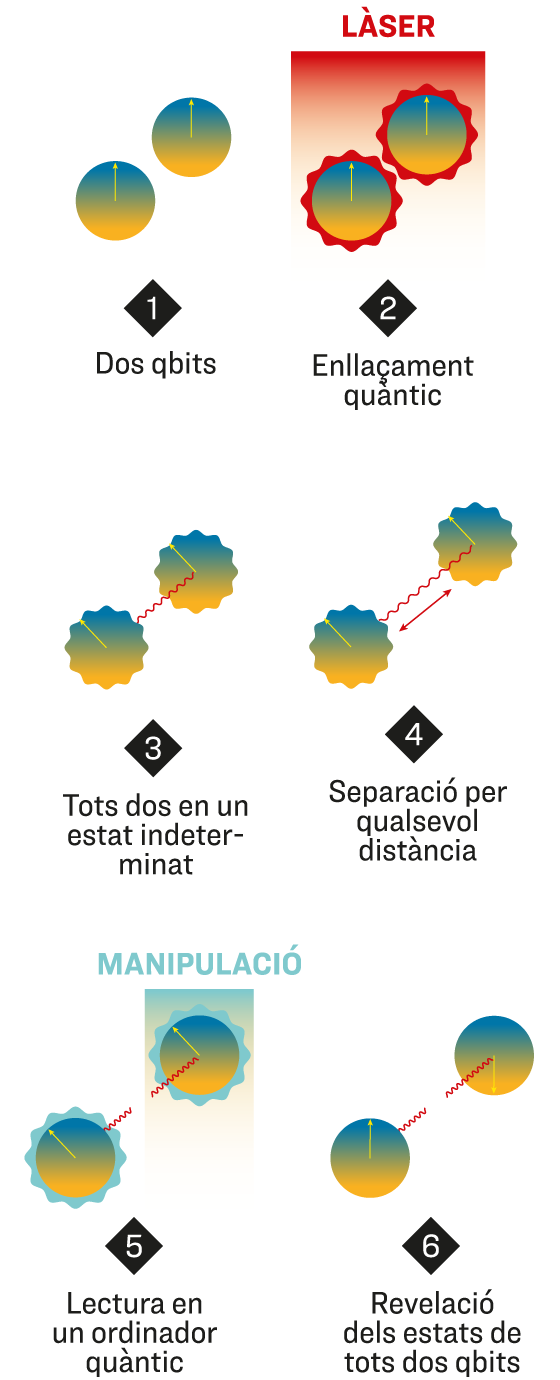This is how Catalonia is preparing to become the first quantum power in Europe.
It has an ecosystem made up of universities, research centers and companies, to become an international hub for quantum technologies.


GenevaUltra-precise sensors, more secure communications, faster and more powerful computers. These are just a few examples of quantum technologies, an area of technological development that has been advancing rapidly in recent years and is poised to have a highly disruptive impact in the coming decades. There are even some applications already in commercial expansion, such as cryptographic systems and the first quantum computers.
The impact that quantum has had and will have on society is one of the reasons why this year it is celebrated the International Year of Quantum Sciences and TechnologiesUNESCO thus commemorates the centenary of the birth of this branch of physics. "What we are celebrating this year is the extraordinary impact it has had over the last 100 years, which are only the first of its life," comments Lluís Torner, founder of the Institute of Photonic Sciences (ICFO) and professor of physics at the Polytechnic University of Catalonia (UPC).
These new tools have the potential to further transform our lives, and thanks to cutting-edge research centers and startups, Catalonia has all the ingredients to become a world-class hub for quantum technology research and production.
Quantum: from revolution to revolution
Quantum physics was born approximately a century ago, thanks to names like Schrödinger, Heisenberg, Bohr, and Einstein himself, among others. This conceptual framework, which emerged as a tool for understanding the mechanisms and nature of atoms and represented the first quantum revolution, has become, a hundred years later, the fundamental basis of almost all our technology.
Quantum physics describes a diffuse and uncertain subatomic world, whose laws challenge classical logic, in which everything is precisely defined. Principles such as superposition, where an object can be in several places at once, or entanglement, which mysteriously connects distant objects, enable the development of new quantum technologies today. While the exact interpretation of this area of physics is still an open topic, scientists have managed to understand the principles sufficiently to facilitate the great technological revolutions of the modern era.
Advances in understanding the subatomic world led to the emergence of transistors in the late 1940s, the essential elements that make up microchips and are the basis of all current digital technology. Another technology that was developed was lasers, from which a whole new branch of technology developed: photonics. "Today's world is essentially a digital world. Without semiconductors, lasers and the chips, This would not have been possible," argues Torner.
While lasers and transistors operate thanks to the principles of quantum mechanics, it wasn't until a few years ago that the most fundamental principles of this branch of physics—superposition and entanglement—began to be fully exploited. Current technology allows us to manipulate atoms and subatomic particles individually. This advance is known as the second quantum revolution, and, in Torner's opinion, "we are right at the beginning": "It's still in its infancy, and no one knows where it will take us, but it has significant potential."
-
Interlacing
When two objects are intertwined, some of their characteristics may be linked, so that when the properties of one of them are modified, the state of the second object is automatically altered, regardless of how far away it is.
-
Overlap
According to the principle of superposition, before being observed, objects are not in a defined state but in all possible states, as if they were in more than one place simultaneously. It is the very act of observation that forces them to define themselves in a specific position. This principle is often represented by the famous Schrödinger's cat, which is found inside a box that is both alive and dead at the same time.
Catalonia, a leading country
Thanks to the rich and varied ecosystem formed by universities, research centers and companies, Catalonia wants to position itself in the quantum technologies sector. "Catalonia has all the ingredients to become one of the main hubs in quantum technologies in Europe," says Marta Estarellas, director of Qilimanjaro, a start-up technological, and adds that it is necessary to "promote investment, attract talent and collaboration."
With initiatives such as the so-called Quantum Valley, Catalonia is making a strong impact in the quantum technology sector. "We're reaping the rewards of bets that began to come to fruition 15 years ago in photonic chips, for example," explains Torner, adding: "Often there are breakthroughs that take a while to arrive. You have to be prepared, patient, and persistent."
Bruno Julià, professor at the University of Barcelona's Faculty of Physics and coordinator of the master's degree in quantum sciences and technologies, emphasizes the importance of having high-quality educational centers.
As part of Catalonia's commitment to quantum technologies, the company Qilimanjaro is building Europe's first hybrid quantum data center in Poblenou, which will be available to users, researchers, universities, companies, and innovation departments by the end of this year. "One of the main objectives is to democratize quantum technologies," explains Estarellas, who emphasizes the importance of having their own infrastructure in the current political context and the protectionism of strategic technologies.
Type of quantum technologies
But what types of quantum technologies are there?
Quantum sensors
The quantum nature of light and matter allows for the creation of ultra-sensitive and highly precise detection devices. These types of sensors can already be found in various industrial sectors, such as the manufacture of atomic clocks for synchronizing GPS signals. "At ICFO, we have an important research program on quantum sensors. In our case, these are sensors for neuromedicine, which use principles of quantum physics to detect the brain's magnetic field," explains Torner of ICFO.
Quantum communications and encryption
Digital information stored in databases or transmitted over the internet must be protected from potential attacks. Typically, this information is protected by security protocols that use cryptographic keys that are difficult to crack. However, the power of quantum computing could easily break down these security barriers. "This means that sensitive digital information could be exposed to interception, putting governments, financial institutions, or hospitals, for example, at risk," says Vanesa Díaz, director of LuxQuanta, a company specializing in quantum communications.
While quantum computing puts secure communications at risk, it also provides the tools to further protect them. Companies like LuxQuanta use the principle of quantum superposition to establish more secure communications. "What we do is install a transmitter and a receiver at both ends of the communication network, which generate and receive the cryptographic key, respectively," says Díaz. "It's a kind of quantum password." With this technology, if someone intercepts the cryptographic key while it's in transit, it leaves a detectable trace.
Quantum cryptography is currently one of the most mature quantum technologies with a broad market. For example, it has a significant impact on companies and organizations that handle large amounts of sensitive data, such as hospitals.
One of the essential components of communications is random numbers, which allow us to encrypt information traveling through various digital channels. "We can't protect information if we're not able to generate unpredictable random numbers," explains Carlos Abellán, head of Quside, a company specializing in the design and construction of hardware that generates quantum random numbers. Abellán comments that "the only way to generate completely random numbers is through quantum computing."
On the one hand, they can be generated at a much higher speed. And on the other, it's essential to be able to verify the quality of the generated random numbers before using them. "Quside's hardware verifies in real time that the random numbers are secure," says Abellán.
Quantum computing
One of the major challenges facing future computing is quantum computing. Thanks to the principles of superposition and entanglement, quantum computers would allow for operations that classical computers would take too long to perform. Although quantum computers capable of running a wide range of applications are still a few years away, small-scale devices are already being used to solve some specific problems. "Quantum computers are not yet very practical for real-world applications. But they are practical for solving some academic problems," explains Marta Estarellas, CEO of Qilimanjaro.
The main challenge facing quantum computer developers is that they are very sensitive to errors. Any disturbance causes the system to lose its quantum properties and become useless. "For quantum computers to work, correction protocols are needed, which require very large chips. This makes scaling up to demonstrate that they outperform conventional computers even more difficult," explains Estarellas.
For this reason, Qilimanjaro is opting for a different technology. "We're pursuing an alternative approach. What we're doing is analog quantum computers, which encode quantum information with continuous modulation of the chip's parameters," explains Estarellas, who notes that this allows them to avoid many errors and be somewhat more robust. "This technology will bring advantages in a shorter timeframe."
Although these types of technologies still have limited applications, they are already commercially available. We have sold two at the BSC", comments Estarellas, who adds that "these are the first quantum computers that have been given access here." Qilimanjaro will soon deliver a new one to the BSC based on analog technology. From the university teaching and research perspective, Julià, a physics professor at the UB, highlights the importance of having it available to them."
Simulating the quantum world
One of the main applications of quantum computing is the simulation of quantum systems. Due to their nature, these systems cannot be accurately described using classical technologies.
Another current area of application involves solving optimization problems. "For example, in a hospital, we can optimize the rotating schedules of healthcare staff or bed management to maximize resources," Estarellas emphasizes.
Finally, the symbiosis between artificial intelligence and quantum computing could also yield very interesting results. "One of the major challenges facing the growth of artificial intelligence is that it requires a lot of computational resources," says Estarellas. "In the future, quantum computing could help reduce that impact."
"Quantum computing will be truly powerful when it can do things completely different from what a classical computer can do," says Torner. "Within five years, we could have dedicated quantum computers that can solve specific problems of economic interest," adds Estarellas.
What is the Catalan quantum ecosystem like?
- Quantum - Mediterranean Valley of Quantum Science and Technologies
Catalonia recently launched the Vall de la Quàntica project. With an investment of 43 million over five years, the goal is to position itself at the forefront of quantum technology research and development. This project is led by ICFO and brings together the entire Catalan quantum ecosystem comprised of universities, research centers, and companies.
- National Supercomputing Center - Barcelona Supercomputing Center (CNS-BSC)
The BSC is Spain's national supercomputing center. Specializing in high-performance computing, it manages the renowned MareNostrum, one of the most powerful supercomputers in Europe. With the recent acquisition of a quantum computer, called ONA, the BSC will play a key role in the development of this revolutionary technology.
- Institute of Photonic Sciences (ICFO)
The ICFO, located in Castelldefels, is one of the world's leading research centers in the study of the fundamental properties of light and its interaction with matter, both theoretically and experimentally, and applied in areas ranging from information technology to energy and health. Several technologies developed at the ICFO have led to spin-offs such as LuxQuanta and Quside. "The start-ups "They are the main vehicle for transferring a portfolio of knowledge to an entity whose objective is to develop it, mature it, and bring it to market," says physicist Torner, for whom "it is a very effective mechanism for carrying out economic transformations."
- LuxQuanta
Born as one spin-off from ICFO in 2021 and specializes in quantum encryption. Her technology facilitates the distribution of quantum keys that enable secure telecommunications.
- Quside
Quside is another company founded in 2017 based on technology developed at ICFO. This company produces devices that generate high-quality and reliable quantum random numbers, which have a variety of applications in high-performance computing and telecommunications.
- Qilimanjaro
Founded in 2019, Qilimanjaro is a company that manufactures digital and analog quantum computers. It has built and installed the BSC quantum computers and is one of the few quantum computing companies in Europe.
- Catalonia Quantum Academy (CQA)
The CQA is a collaborative platform within the framework of the Quantum Valley that coordinates efforts to strengthen education, training, and professional development in quantum science and technology. "The Catalunya Quantum Academy has also helped us set up an advanced quantum laboratory for the master's degree, but we've also used it in some undergraduate subjects," explains Bruno Julià, professor of physics at the UB and coordinator of the master's degree in quantum physics.






